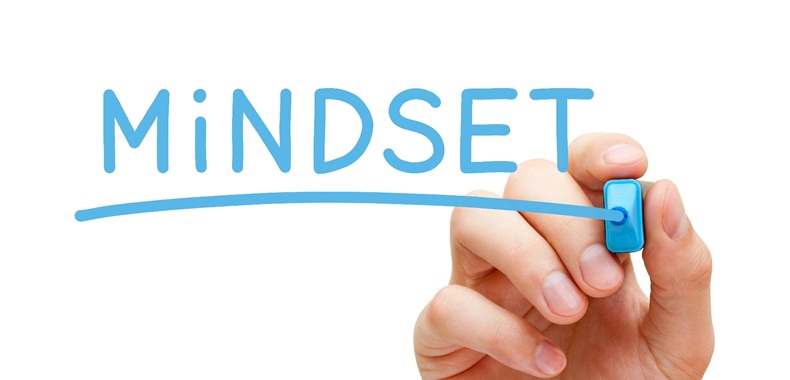What is mindset?

Know more about the ‘new psychology of success” and how it can improve your decision-making process no matter the areas of your life we’re talking about.
Mindset. A word which has becoming more and more common, and maybe you’ve heard it already during a meeting at work or read it in an entrepreneurial website of your choosing, but still aren’t sure about its importance - both professionally and personally. In literal terms, mindset is a… well, a set of the mind. Basically your way of thinking, seeing the world, taking decisions, picking attitudes and, consequently, the results you obtain with those actions.
Psychologist Carol S. Dweck, from Stanford University, is the international specialist when it comes to success and motivation. She’s the one who created the term. She’s also a writer, author of books such as: "Mindset: The new psychology of success", and "Mindset: How you can fulfill your potential", in which she explains how our mental programming is directly related to our day-to-day actions, and how it is possible to reprogram ourselves when the results aren’t the ones we wished for.
If you’re interested in learning a bit more about how it works, keep reading!
THERE ARE TWO TYPES OF MINDSET
After years of research on the subject, and several studies which included hundreds of people to try and understand their mental programming, Carol reached the conclusion that mindsets can be divided in two different categories: fixed and progressive.
The individual who has a fixed mindset believes it’s impossible to learn new abilities or acquiring new capabilities. It’s a “negative” mental model, therefore considered detrimental. Those who present that kind of mindset usually prefer their comfort zones, tending to impose new obstacles when new opportunities arise.
On the other hand, progressive mindset is more positive. Also called “growth mindset”. The individual with this mental programming believes it’s possible to develop new skills, as long as you’re patient and there’s effort involved in the process.
Both mindset can be easily found in any work environment. All you got to do to identify them is observe the people who are constantly trying to keep up with things, who are after new learning opportunities and experiences (the progressive ones), and those who would rather keep doing whatever they have already been doing, without taking risks (the fixed-mindset ones).
Now here’s a challenge for you: guess who’ll be better when it comes to reach higher positions?
You have probably already realized that the progressive mindset is more beneficial, both personally and professionally. Being open to changes, willing to improve, is important for any individual - especially when you are part of an organization, an environment in which you are constantly analyzed and put into pressure.
If you carefully observe, people who today occupy leadership positions in important companies, such as Bill Gates, for example, definitely have a progressive mindset. They are open to the new, always trying to improve themselves, trying to deliver better results and learn new skills. The fixed-mindset ones, on the other hand, are happy enough with the jobs they already have, and probably won’t do much in order to go higher.
HOW TO CHANGE YOUR MINDSET?
If you, by any chance, concluded that you’re more of a fixed-mindset kind of guy, just chill. It is possible to change your results, if you’re really willing to. It’s what people have been calling “mindshift” - transforming your current mindset into a more active, successful one.
One of the world’s most famous specialists when it comes to personal development, Anthony Robbins, developed seven steps for those who want to go from a fixed mindset to a progressive one. Here they are:
STEP 1: CLARITY
Recognize where you stand now. No need to be ashamed of it. Just be clear and honest about it.
STEP 2: CERTAINTY
Establish in your mind the certainty that you want to change, once and for all.
STEP 3: CHEERING
After being sure that it is possible to change, cheer up! You finally know where you want (and can) get!
STEP 4: FOCUS
Define goals in order to reach the results you want, all with their respective deadlines, of course!
STEP 5: COMPROMISE
One you have your goals, dedicate yourself to follow the plan.
STEP 6: MOMENTUM
Define the actions you need to take until you conclude your mission. Know where you stand.
STEP 7: SMART
Be smart. Your steps must be specific, mesurable, reachable, tangible.
Font: AreaH
Posted in: 04/04/2019
Last modified: 11/13/2025
0 comments